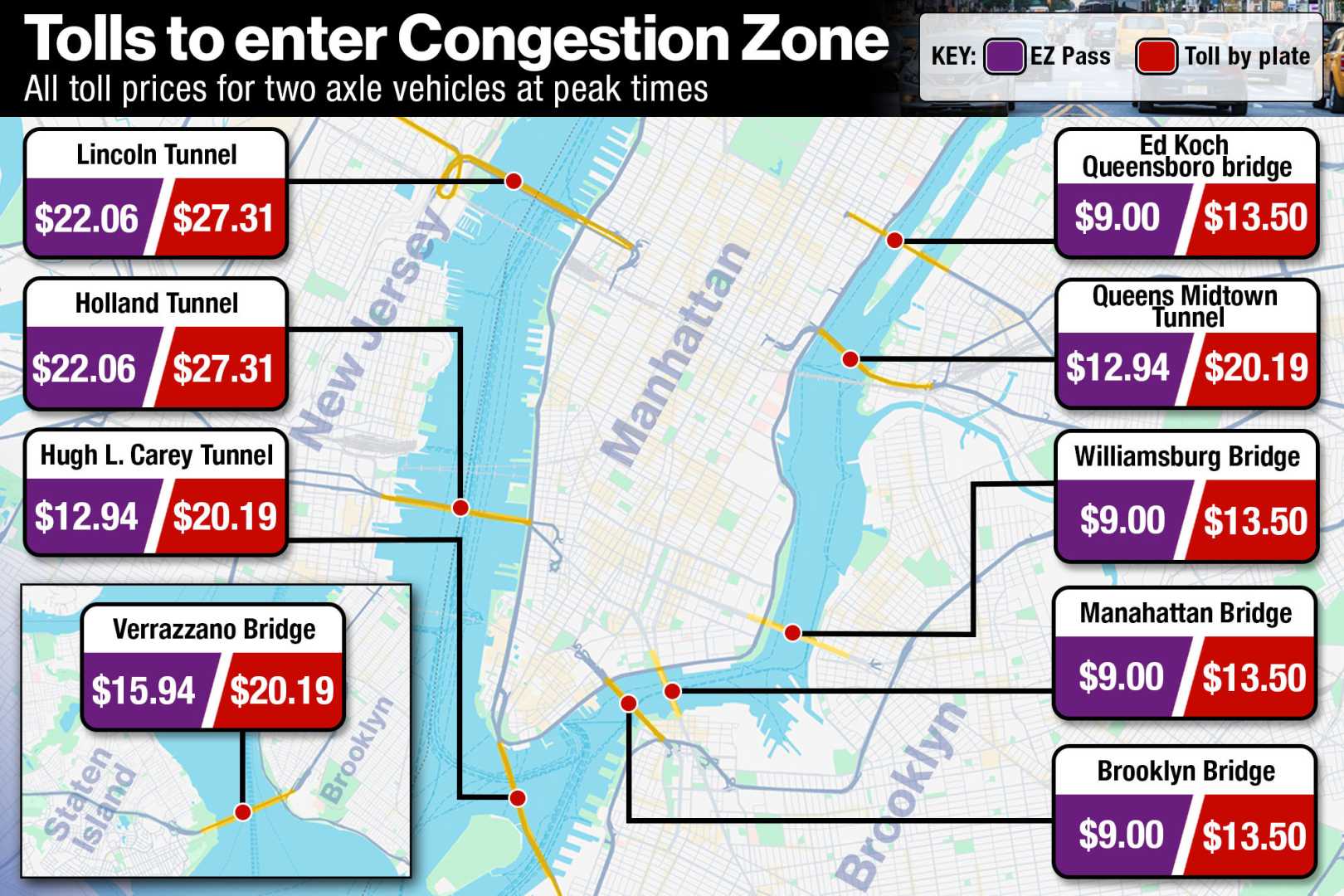Business
New York’s Congestion Toll Remains Despite Federal Deadline

STATEN ISLAND, N.Y. — New York City‘s $9 congestion toll for drivers in the busiest areas of Manhattan will remain in effect despite a federal deadline to eliminate the program.
In a statement regarding the federal government’s recent deadline, a spokesperson for New York Governor Kathy Hochul declared, “The program is working. Traffic is down, business is up and the cameras are staying on.” This marks a significant pushback against the U.S. Department of Transportation (USDOT), which had previously indicated it expected New York to comply and terminate the program.
The USDOT stated on Friday, “USDOT will continue to fight for working class Americans whose tax dollars have already funded and paid for these roads.” However, officials from the Metropolitan Transportation Authority (MTA) suggest that the program’s legal status may remain unchanged until a federal judge resolves ongoing court filings, which could take until fall.
“In case there were any doubts, MTA, State and City reaffirmed in a court filing that congestion pricing is here to stay and that the arguments Secretary Duffy made trying to stop it have zero merit,” said John J. McCarthy, MTA chief of policy.
Congestion pricing aims to reduce traffic congestion and fund necessary improvements for the subway system. The toll applies to most vehicles entering Manhattan’s central business district, which extends from 60th Street to the southern tip of the Financial District. A peak fee of $9 is charged from 5 a.m. to 9 p.m. on weekdays and from 9 a.m. to 9 p.m. on weekends.
Recently, the toll program has faced multiple federal deadlines, leading to further discussions regarding its future. “The bottom line is this: all federal money comes with strings attached,” Assemblymember Sam Pirozzolo, a Republican representing Mid-Island, said. He called for a federal watchdog to monitor New York’s tolling practices.
Some Staten Island lawmakers have expressed dissatisfaction with the toll program’s impact. “This poorly implemented policy increases traffic and pollution here, offers no viable exemptions for city workers and the disabled,” said Councilmember Kamillah Hanks, a Democrat representing the North Shore.
Assemblymember Charles Fall also highlighted the need for a renewed focus on how these tolls affect residents and their communities. “Will congestion pricing finally deliver reliable transit to underserved communities in the 61st Assembly District? Staten Islanders have waited far too long for meaningful infrastructure investment,” he stated.
The federal government initially set a deadline of March 21 for New York to terminate the program but later extended it to April 20. Recent court rulings indicate that the toll program may continue for the time being, as a federal judge dismissed several legal arguments against it on Thursday.
With congestion pricing now in effect for several months, recent data show a reduction of about 70,000 to 80,000 vehicles entering Manhattan daily, contributing to a 13% decrease in overall traffic levels. The outcome of this ongoing legal battle will play a pivotal role in the future of New York City’s congestion management strategy.












